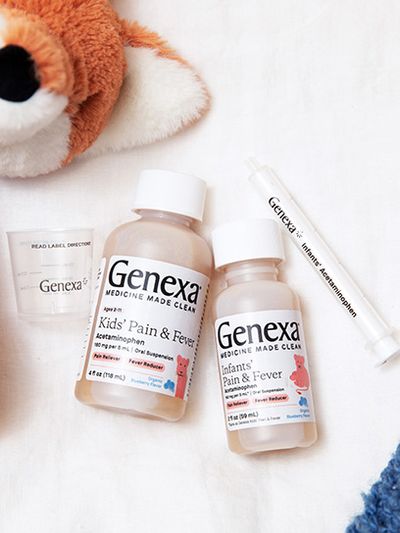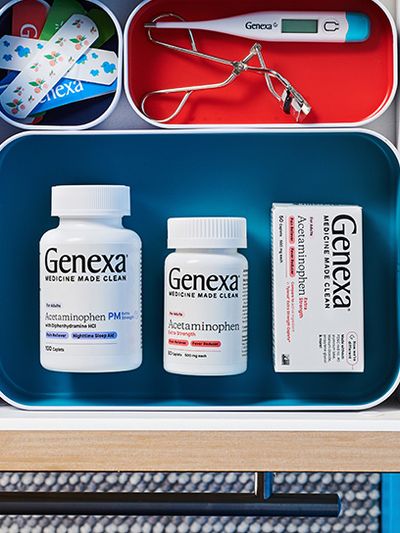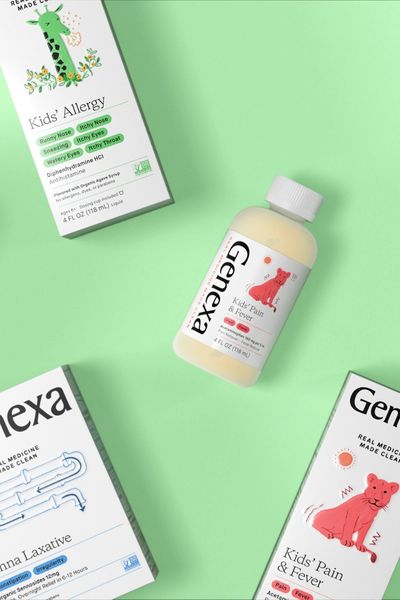What To Do If Your Toddler Has A Fever
The Guide To Dealing With A Toddler's Fever
Table of contents:
When your toddler comes down with a fever, your first instinct is to help them in any way you can. Toddler fevers can be worrying, but the good news is that many of the causes are nothing too serious.
That said, you can generally reduce a fever with acetaminophen, but it all boils down to treating whatever caused the fever in the first place. Because of this, it is always important to consult a doctor when you are not quite sure what is causing your child’s fever. A doctor can help you get to the bottom of it, and can outline the proper treatment plan.
This is your complete guide to toddler fevers, what causes them, and how you can soothe the symptoms.
Toddler Fevers: What They Are and What Causes Them
When your toddler has a fever, the first thing to remember is that the fever itself is not an illness… instead, illness or infection causes the fever.
A fever happens when your toddler’s internal thermostat raises their body temperature higher than usual, and this is all controlled by the part of the brain called the hypothalamus. Though the hypothalamus usually keeps temperature regulated at around 98.6 degrees Fahrenheit, it can also raise your child’s body temperature above the normal level in response to an illness, infection, or other cause.
The reason this happens is that this is the body’s way of trying to fight off the germs, viruses, and bacteria that are causing the illness or infection. The higher heat level helps to try and kill off invaders because many germs have difficulty surviving at the higher heat level.
If your child is generally healthy and the fever is below about 100 degrees Fahrenheit, it may not need to be treated. However, anything over 100.4 degrees Fahrenheit is considered a fever, in which case you should take your child to be seen by their pediatrician.
Common causes of a fever in toddlers include:
- Illness or infection, like strep throat or the flu
- Overdressing, especially for newborns.
- Immunizations can cause a fever in babies and children, but it should only be a low-grade fever that appears within a day or two after the vaccination.
Low-grade fevers generally do not warrant a trip to the doctor’s office unless they are persistent in nature or do not respond to treatment. High fevers, though, are more concerning.
When is a Fever is Minor vs. Major
Being able to recognize when your little one’s fever is nothing to worry about versus when it requires medical attention is a critical part of helping them feel better.
Knowing the signs that indicate that a fever is something minor will help you stay calm during times when the situation is not urgent. Conversely, knowing the signs of a more serious fever allows you to be more prompt about seeking help.
When a Fever is Typically Nothing to Worry About
There are a few simple things that can help you recognize that your toddler’s fever is nothing to worry about. These indications are:
- Your child’s fever lasts for less than five days AND your toddler’s behavior has continued to stay normal. If your toddler continues to be playful and they are continuing their regular eating and drinking habits, you likely do not have anything to worry about. Your child may seem more tired than usual, and this is normal.
- If your child is between 3 months and 3 years old, their fever should not exceed 102 degrees Fahrenheit. If your child is older than 3 years, their fever should not exceed 103 degrees Fahrenheit. These kinds of fevers are very common, but they do not necessarily need to be worrisome. Of course, you should always speak to a pediatrician if you have concerns.
- Your child has a low-grade fever and was recently immunized. A low-grade fever is completely normal after a vaccination, especially if it lasts for less than 48 hours.
That said, there are also a few indications that your little one’s fever is something more serious, and you should seek medical attention.
When You Should Seek Medical Attention
If the following signs or symptoms are present, take your child for medical care as soon as possible:
- Your toddler’s fever has lasted for more than 5 days
- Your child’s fever exceeds 104 degrees Fahrenheit
- Your child’s fever is not responding to treatment, like fever medicine
- Your child is not acting like themselves. For example, they may be difficult to wake up, refusing to eat or drink, or are not their normal, playful self. If your child is not urinating every 8 to 12 hours, this is a sign that they are becoming dehydrated.
- Your child recently received a vaccination and now has a fever over 102 degrees Fahrenheit that has lasted for more than 48 hours.
- You are concerned about your child’s health and wellbeing. If you are experiencing concerns about your child’s health, it is important to consult a doctor.
Moreover, some fevers can cause seizures as a side effect. Not all seizures involve jerking movements of the body, and some seizures appear as if your child has passed out.
If your child experiences a seizure, you should:
- Place your child on their side
- Avoid placing anything in your child’s mouth
- Call 911 if the seizure lasts for more than 5 minutes
If the seizure lasts for less than 5 minutes, you should still seek immediate medical attention.
Treating Your Toddler’s Fever
When it comes time to treat your toddler’s fever, there are a few ways you can approach this.
Not all mild fevers require treatment, but if your kiddo’s symptoms are making them uncomfortable, this is a sign that treatment is necessary. That said, reducing your child’s fever will not get rid of the actual illness or infection itself, so it is still very important to focus on treating the illness, too.
Fevers over 100 degrees Fahrenheit can easily be treated with acetaminophen. However, Children’s medicine is dosed according to the child’s weight so it is important that you weigh your child before giving them any fever-reducing medication like acetaminophen.
If your child’s fever results from a cold, try healthful homeopathic and organic remedies such as arsenicum album, euphrasia, allium cepa, and more.
That said, some other ways you can help treat your kid’s fever include:
- Dressing your child lightly to make sure their clothing does not add to their discomfort by trapping their body heat and making their temperature rise even more
- Helping your child drink plenty of fluids. Staying hydrated is extremely important, and you should frequently offer them liquids like water, juice, or popsicles.
- Giving your child a lukewarm bath can help regulate their temperature. Make sure the water is not so cold it makes them shiver, but not so hot that it increases their temperature. Additionally, do not leave them unattended in the bath.
The Bottom Line
Many things that cause a low grade toddler fever are nothing too serious, but sometimes, fevers require prompt medical attention, especially when about 100.4 degrees Fahrenheit. A fever can happen as the result of many kinds of illnesses or infections, and even the common cold can lead to a low-grade fever.
If your child is acting normal and only has a low-grade fever that is not seriously impacting them, it is often nothing to worry about. On the other hand, a high fever, a fever that lasts for more than 5 days, or a fever that does not respond to treatment is a sign that you need to call a doctor.
Fevers can be managed at home through home remedies like keeping your child hydrated, dressing them in light and breezy clothing, and offering them acetaminophen as a fever reducer.






